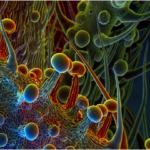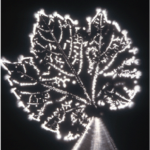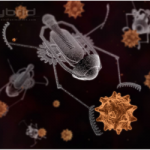Nano- tech seems like a solution to many problems facing society today. Little robots going around fixing things like potentially fatal diseases. I read somewhere that scientists are able to change the atomic structure of different molecules making new and better materials. I heard something that might be far-fetched but that if u rearrange the molecules of water and top soil and you will get
potatoes!!! The making of new products and better materials would help society in many ways. To make our bridges safer, our buildings more stable and meny other things come to mind. In the end nano-technology seems like the answer to so many things in unimaginable. Its like a re-run of the industrial revolution, new ideas will spawn new jobs will be created, more lives will be saved. In todays lesson we learned about vaults and how they can take materials to parts of cells that are in need. If this happens the lives of many will be saved, vaults would kill off even the slightest notion of cancer in the human body.
“Go away with your sofa units and strine green stripe patterns, I say never be complete, I say stop being perfect, I say let… lets evolve, let the chips fall where they may.”- Tyler Durden
This might seem like a really random quote, but my interpretation is that Durden thinks that our world is becoming worse with more and more technology. He is tired of mans obsession with material items and wants to be stripped of values that might seem artificial.This is kind of a counter-argument against my position. It doe pose a good question though, are we going to far?? Are we messing with nature a little too much? As humans we only see benefit for ourselves but we must be careful on the side- effects of all this research. This might sound crazy but with some demented motives people have out there some scientists could easily use nano-tech to manipulate people and casue controversy.
http://www.imdb.com/title/tt0137523/quotes
^ [http://www.nanolawreport.com/Cambridge.pdf
“Nanotechnology Basics: For Students and Other Learners.”
^ Cristina Buzea, Ivan Pacheco, and Kevin Robbie “Nanomaterials and Nanoparticles: Sources and Toxicity” Biointerphases 2 (1007) MR17-MR71.
^ Nanosystems: Molecular Machinery, Manufacturing, and Computation
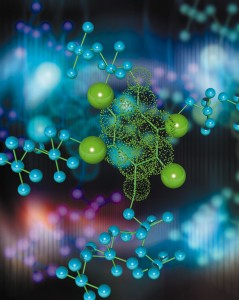
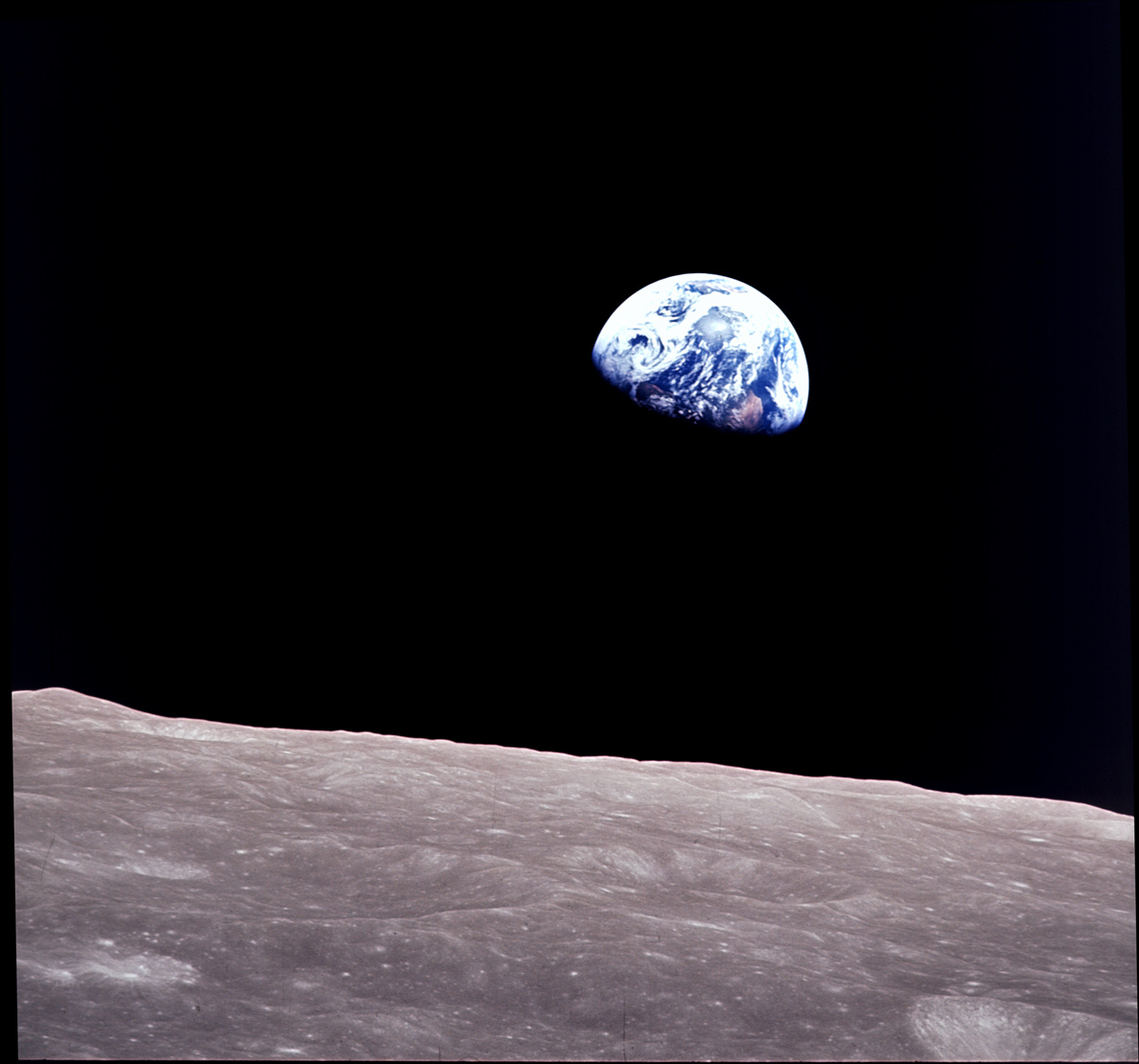

Posted in Uncategorized | Tagged X |
Nanotechnology is the science of the uses of nano-sized particles being applied to practical ideas. Nanotechnology has been thought to be a new technological idea but it has actually been used, often accidentally, for quite some time. I was actually surprised to learn from the professors that nanotechnology has not yet been applied practical uses only trivial ideas. Scientists and artists alike are turning to nanotechnology to further advance their career. On the science side of nanotechnology I found it interesting to learn of the future plans of some applications of nanotechnology. For instance, scientists working at NASA have proposed an idea to create a pill, which would release nano-sized machine or “nanobots” upon consumption. After dispersing throughout the body these nanobots would work to repair damaged cells, tissues, and organs. I found it fascinating that the people believe that in the near future, mechanical creatures could help out biological organisms; especially some as advanced as humans. Another application I found surprising was a blood flow powered battery to power the nanobots. I have learned that scientists have built a small apparatus with hundreds of nano-sized rod-like structures, which sway back and forth with the flow of blood and thus create energy to power future nanobots or other mechanical creatures. What I have come to realize is that even though people may think art and science are completely different, the truth is that they share many of the same techniques. Also, what many people don’t realize is that nanotechnology itself has been used for artistic purposes in the past. For instance David Scharf has used the scanning electron microscope for his artwork and Marie-Jeanne Musiol used electromagnets for her art as well.
http://www.nanobot.info/
http://news.thomasnet.com/IMT/archives/2005/04/nasa_building_n_1.html
http://www.foresight.org/Updates/Update41/Update41.2.html
http://www.2spi.com/catalog/scharfphoto/David_Scharf_stock_photography.html
http://www.mse.iastate.edu/microscopy/home.html
Posted in Uncategorized | Tagged Group Z |
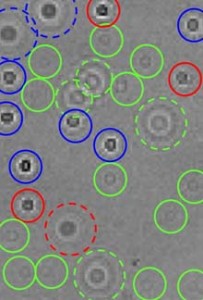
Software Identifying Blood Cell Shadows
Today’s activities were really interesting to me. I find the more engaging activities to be much more fun. The lab visits and question-and-answer style lectures are just that. I found the gadgets that take images of the shadows of blood cells to be really cool, but I don’t know how practical it is to use a cellphone for the portable version of the devise. A lot of developing countries are lacking cell service and would require a computer to email the pictures to a hospital, which is what a doctor would do if they just had the webcam version. It is somewhat useful in the way that a doctor could do a house-call and not have to bring a laptop, but most people today would go to the doctor’s office to see what is wrong. But the scientists only have to get their invention to the point when a company would buy the idea from them.
The lecture about the toxicology was also very informative. I had never thought about silver having an anti-bacterial property and now it makes complete sense. This is also the reason that it became a precious metal. Apparently since egypt man has known about silver’s properties and made plates and cups from them which would keep food for longer and keep water fresher than conventional materials. Also it gave rise to silverware which was generally more hygienic to eat with. But silver was not widespread throughout the public and was reserved for the royal and wealthy people throughout the western world for ages. Even though that doesn’t have very much to do with nano particles it was an “ah-ha” moment for me. Those types of things always stick in my head the most. Overall today was a pretty easygoing and the group also got out early which is a plus. Three days down.
Links:
http://medgadget.com/archives/2008/09/counting_infected_blood_cells.html
http://en.wikipedia.org/wiki/Silver
http://www.sciencedaily.com/releases/2008/04/080429135502.htm
http://www.sciencedaily.com/releases/2009/06/090601110403.htm
http://www.azonano.com/Details.asp?ArticleID=1695
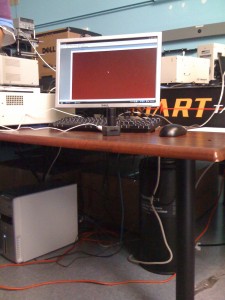
Image of Blood Cell Shadows
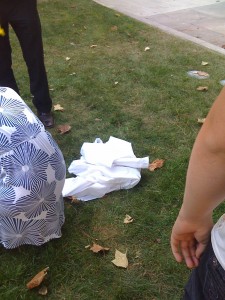
Nano-Tech Spill Resistant Lab Coat
Posted in Uncategorized | Tagged group y, Y |
By suelee | Published:
July 8, 2009
Today we learned about all the different kinds of microscopes. I don’t remember all of them but the one that made an impression the most was the one where the depth and texture of the sample was determined by a needle being rolled over the surface and a laser being pointed to the top of the needle with a detector at the top absorbing the reflected laser beam. This detector would then form a three dimensional picture showing all the mountains and valleys from the data it collected.
When the scientists explained to us that the point on the needle narrows down to a single atom, I was surprised. Would that atom be able to stay on even with all the pressure and friction from the sample, because no matter how light the pressure is, there still will be pressure, and considering how small the sample and the needle are, the proportion of size to pressure will definitely increase. I was wondering and picturing these things while the teacher went on with the lecture for a while. I didn’t remember till I checked my notes later that it was called the atomic force microscope.
Another topic that interested me was the theory of the quantum confinement. I didn’t understand the first time the teacher explained it, but the video and the pictures they showed later helped a lot. I like how the color of the quantum dots changed as the molecule grew smaller. At first I thought that the color just changed with only the shrinking of the size. The video helped me understand that the quickening movement of the quantum dot in the shrinking molecule contributed to the color change, though I wasn’t sure how.
The lab visits were great too. Most of the microscopes we saw showed the images on the computer screen, and I guess that helps with clarity during research, but I personally like looking through the lenses; it makes it feel more real and live.
http://www.lbl.gov/Science-Articles/Archive/Quantum-Dot-Electronics.html
http://www.nanoscience.com/education/AFM.html
http://mse.iastate.edu/microscopy/ray_diagrams.html
http://mse.iastate.edu/microscopy/vacuum.html
http://mse.iastate.edu/microscopy/source.html
http://mse.iastate.edu/microscopy/beaminteractions.html



Posted in Uncategorized | Tagged group y, Y |
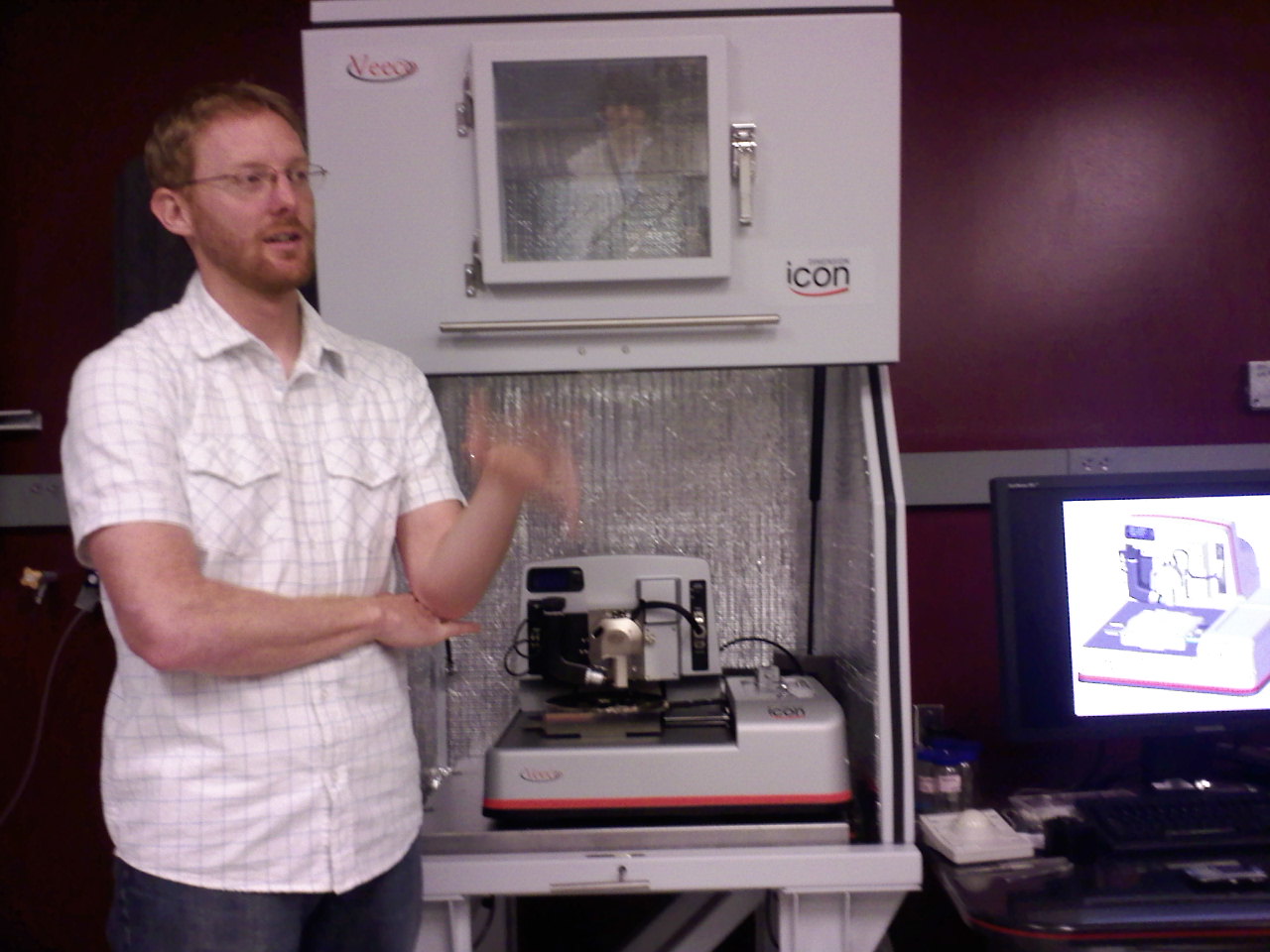
Adam explaining the function of an atomic force microscope
“Seeing the Invisible” was the topic of the day. This morning started with an introduction to the perpetual cycle facilitated by art and science begat by the Renaissance. From the coordinate plane to the camera, perspective became an essential part to the physical and artistic world. Louis Pasteur opened up the door to the microscopic world with his research on bacterial growth. Technologies have come a long way as has our understanding of life on the nanoscopic scale. During this morning’s lecture we were shown a game called “foldit” which uses gamers to solve protein structure. The game and its purpose reminded me a lot of what K. Eric Drexler outlined in his famous book Engines of Creation.
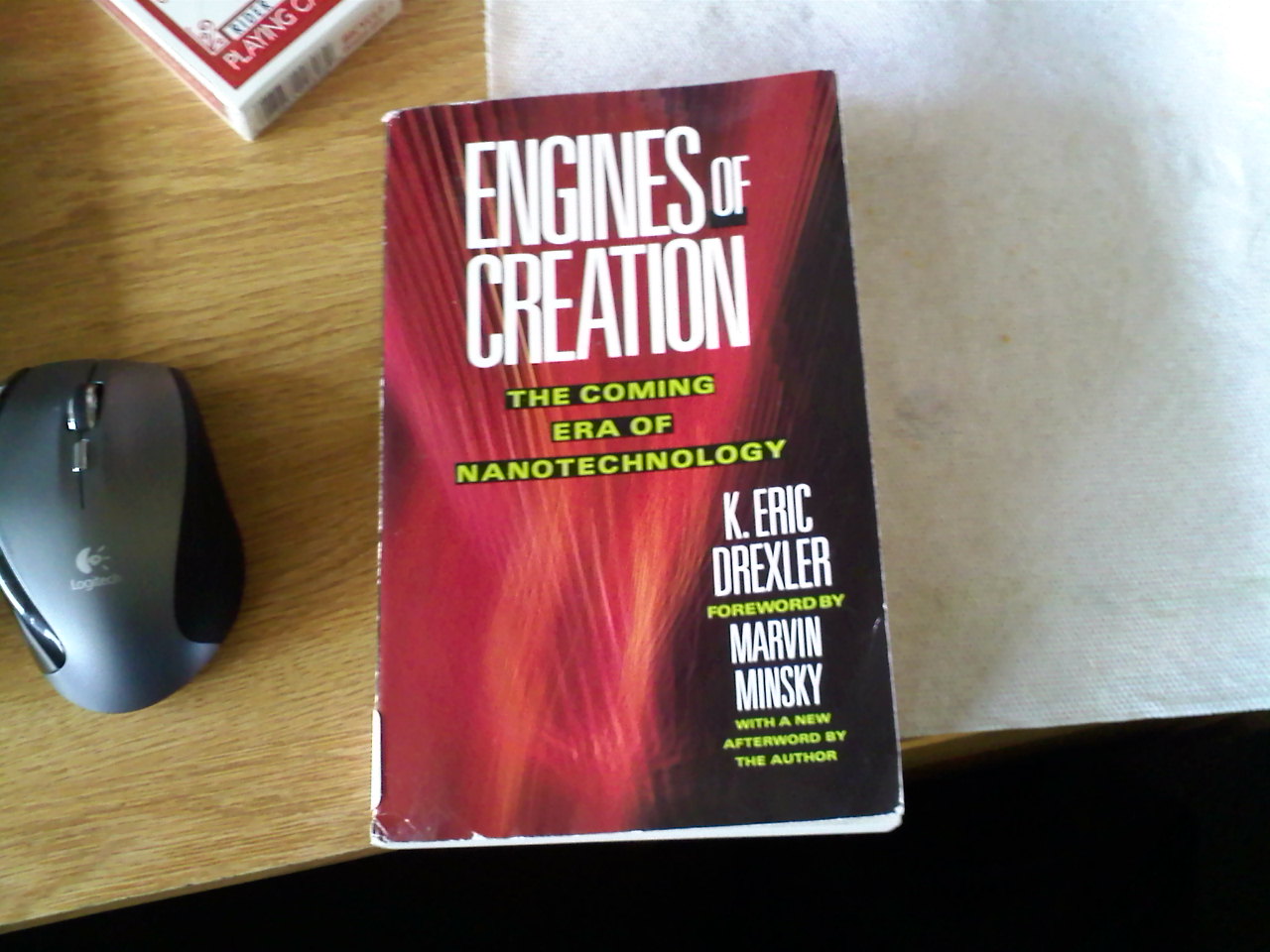
Drexler's Engines of Creation
Drexler described fact forums and hypertext which he called “magic paper made real” (220) that would allow scientists to publish their findings “as fast as mail, meetings, and electronic messages permit, rather than delaying exchanges by many months” (211) where users will “associate ideas through published links, enriching their meaning” (224). Published in 1986, it’s incredible to see Drexler outlining the purposes of online tools like Wikipedia and the internet itself years before its emergence as the ultimate terminal for information exchange. Drexler was ahead of his time describing a future representative of today with publicly accessible tools like the internet and “foldit” that make life more productive and efficient.
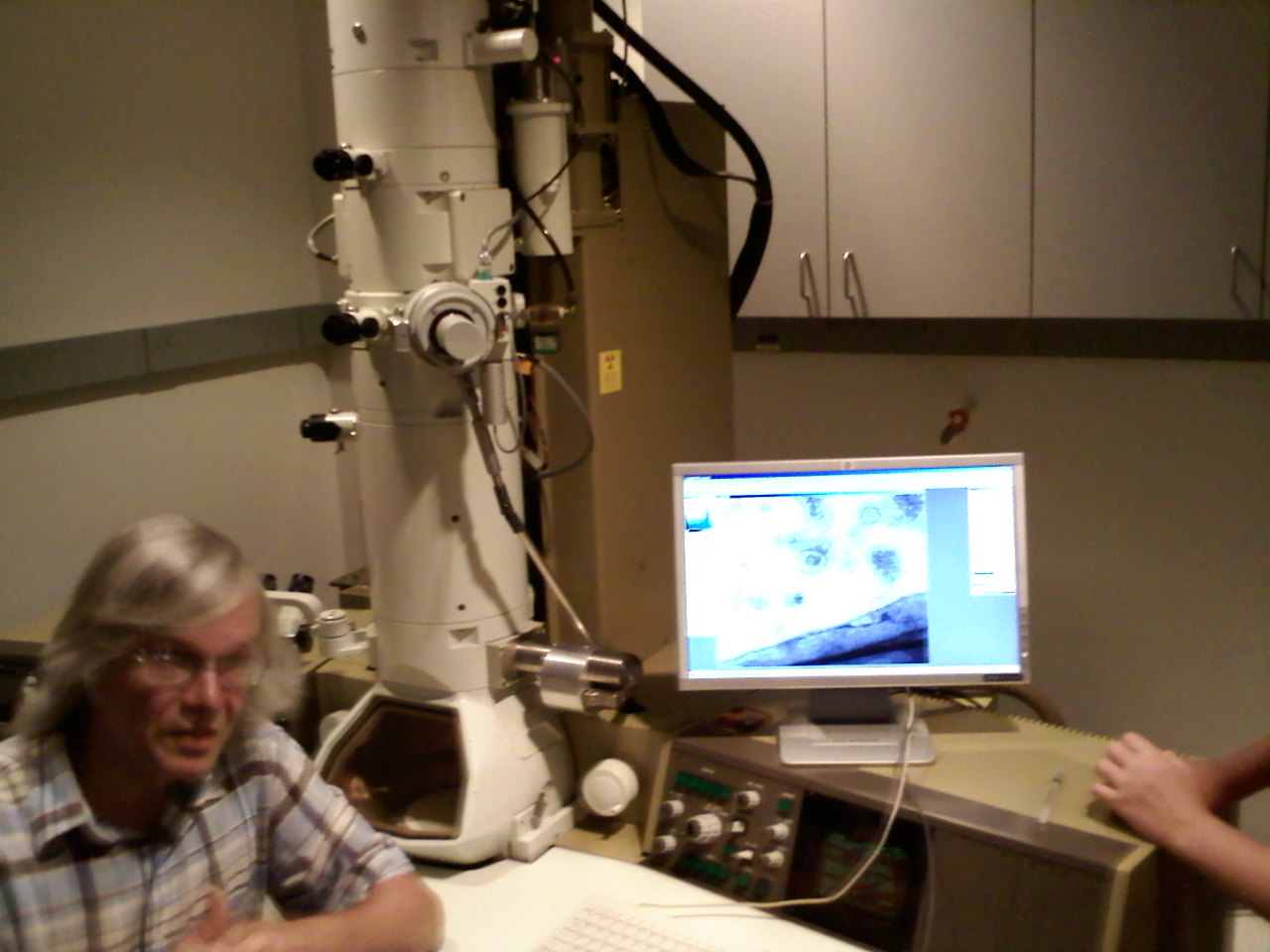
a demonstration of the electron microscope in action
Refinement of nanotechnology is close. Lab visits today revolved around microscopy including X-ray, light, and scanning microscopes. They all at one time seemed so similar but my experiences today have shown me otherwise. Each form of microscopy has its own specific set of characteristics, purposes, and advantages. The atomic force microscope (AFM), for example, functions not only as a microscope but as a probe able to manipulate the matter being analyzed. It was a very enriching day. To conclude the afternoon, I had the honor of meeting Kevin Love in front of the Wooden Center.
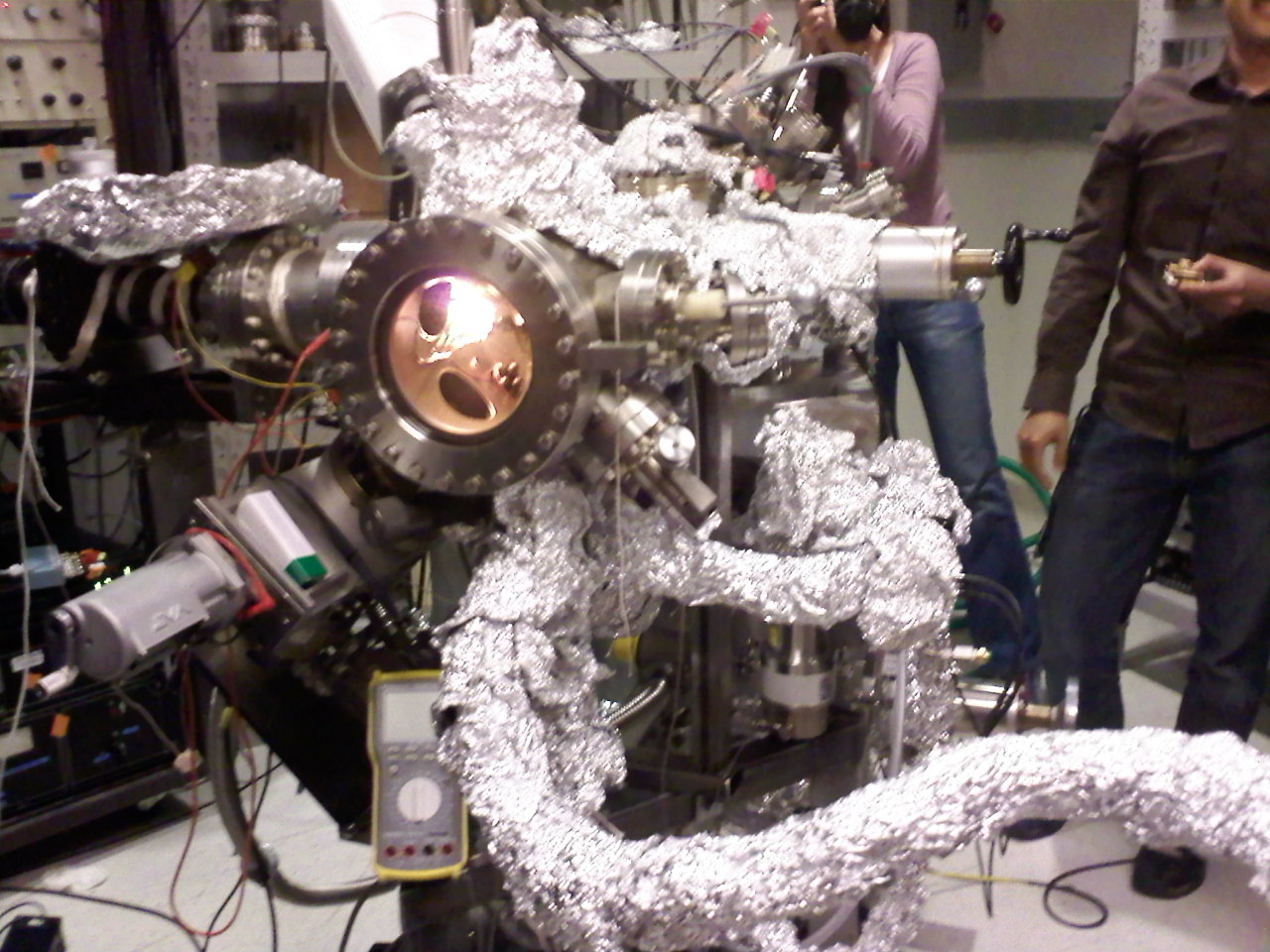
a scanning tunneling microscope (STM)
Posted in Uncategorized | Tagged Group Z |
Day 1: Top-Bottom; Bottom-Up
Macro. Micro. Large. Small. This is what differentiates the visual world from the invisible.

Today, we learned about the different microscopes used by scientists to accommodate the growing field of nanotechnology. Among these include compound microscopes, electron microscopes, field ion microscopes, and scanning tunneling microscopes. Truly, the human eye has evolved past its biological confines to venture into the nanosphere. No longer do we have to depend on the limitations of nature’s given spectrum.
While the light microscope has been a fixture in the scientific society, the visible light spectrum has proved too constricted for nanotechnology use. Therefore, we were introduced to the atomic force microscope, a cutting-edge technology that relied on the pressure exerted by the atom on the end of the tip of the probe (cantilever) to scan the surface of the sample in order to dictate its size and shape. Like a paintbrush, the pressure applied and the contact between probe and “artwork” determines the outcome of the vision.
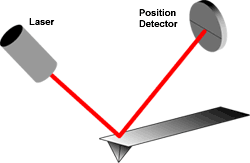
Serge then showed us a variety of machines that CNSI had in the basement that included a centrifuge and a scanning electron microscope. The scanning electron microscope had the ability to magnify the sample up to a few hundred nanometers. I find it ironic that what is closest to us, ie. the nanospectrum, is the most foreign and jarring to visualize. Perhaps that is the charm of art as well. That we are enabled to see what is in front of us but cannot without the instrument of science.
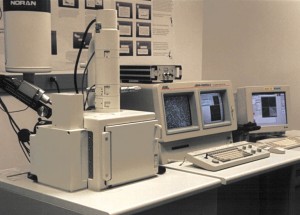
Links
http://www.cnsi.ucla.edu/
http://www.britannica.com/EBchecked/topic/93144/cantilever
http://www.mos.org/sln/SEM/
http://www.nanoscience.com/education/AFM.html
By adam | Published:
June 13, 2009
The next item on my ADWT list is Symbiotica, an artistic laboratory ( i love this term ) , which is dedicated to helping artists and researchers engage in wet biology practices in a biological science department. Oron Catts and Ionat Zurr from the Tissue Culture and Art Project are the two artists behind the idea. One project that was also exhibited in last year’s Deisgn and Elastic Mind show at MOMA is seen below,
“Victimless Leather is grown out of immortalised cell lines which cultured and form a living layer of tissue supported by a biodegradable polymer matrix in a form of miniature stich-less coat like shape. The Victimless Leather project concerns with growing living tissue into a leather like material.”

victimless leather oron katts ionat zurr
They also helped grow Stelarc’s 1/4 scale ear , but I’ll talk more about it in my next post.
By pinar | Published:
June 12, 2009
Below you’ll find some examples of artwork that clearly are inspired by scientific concepts . Although it might seem that it is artists who add scientific concepts to their repertoire, there are certain cases where scientists were inspired by artists / artistic concepts/artworks . In a time where most definitions (hence boundaries) are melting into air , works that explore boundaries between disciplines are highly interesting.
I’ll begin with Eduardo Kac ( the GFP bunny guy) , who’s recognized for his interactive net installations and his bio-art . Below is one of his latest works a genetically-engineered flower (“Edunia” ) , that is a hybrid of Kac and Petunia. Excerpt from Kac’s website :
“The Edunia expresses Kac’s DNA exclusively the red veins of the flower. The gene Kac selected is responsible for the identification of foreign bodies. In this work, it is precisely that which identifies and rejects the other that the artist integrates into the other, thus creating a new kind of self that is partially flower and partially human.”
The main title of the work is “natural history of enigma” you can get more info here.

a flower that carries eduordo kac genes
I believe we should be able to answer some questions such as :
“what makes this art? ( or bio-art ) ?”
“what makes this interesting?”
Please leave comments and link replies.
More to come soon…


By pinar | Published:
May 27, 2009
Sci|Art MMXI Summer Institute Blog has launched!



